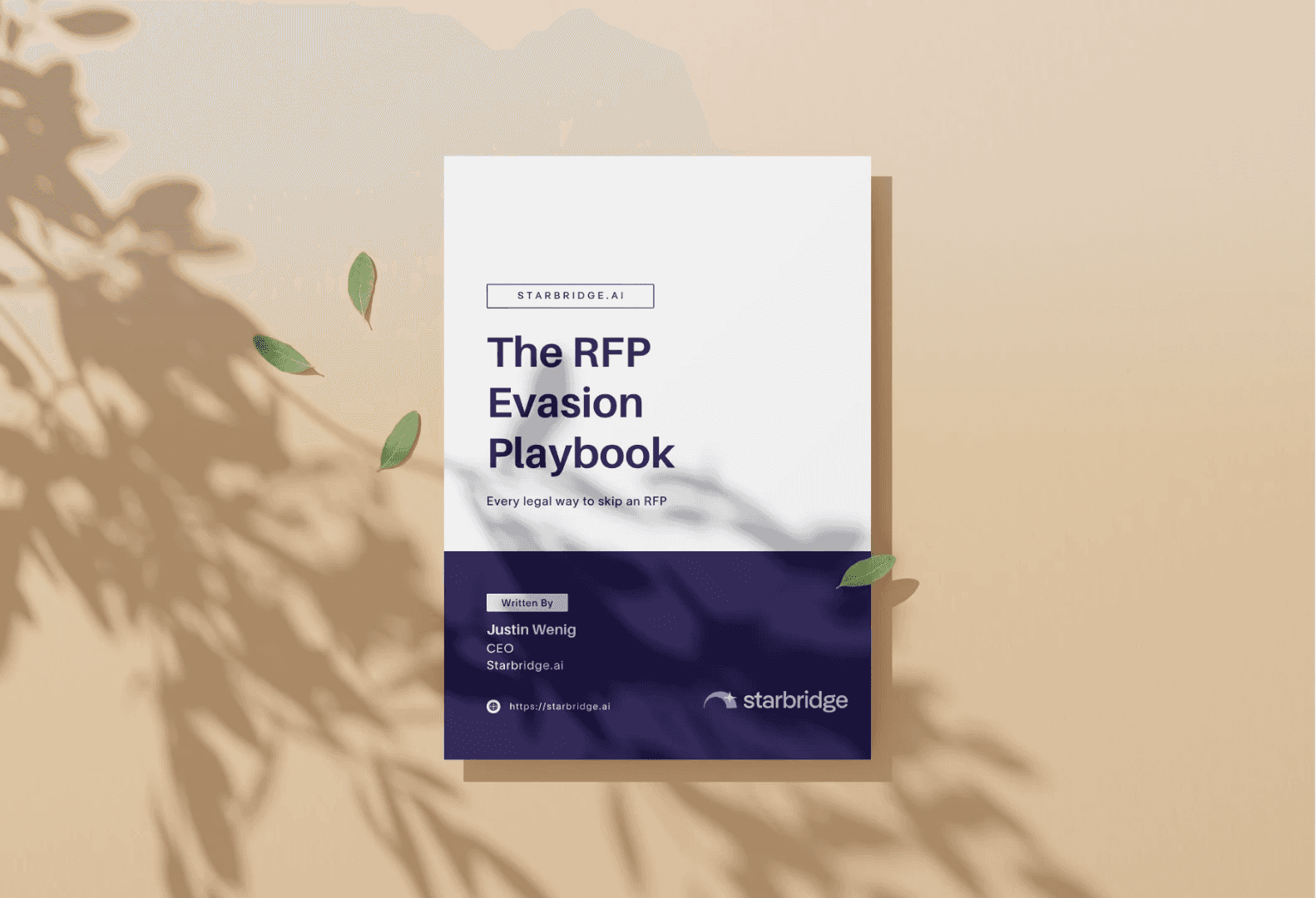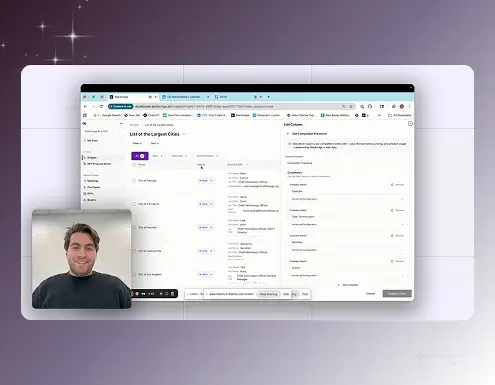
The RFP Evasion Playbook
A public sector buyer wants to buy your product, but now procurement says:
“We’ll need to go to RFP.”
That’s the death knell for many deals. RFPs mean delays, compliance headaches, competition, and risk: Even when the buyer has already made their decision.
Good news: There are multiple legal, ethical, and widely used ways to avoid going to RFP, if you help your buyer navigate the options.
This playbook gives you every method: sole source, piggybacking, cooperatives, consortiums, and resellers.
Your Goal as a Vendor
Equip the buyer with a clear, compliant pathway to buy you directly, and give them all the documentation, contract vehicles, or language they need to make procurement say “yes.”
1. Sole Source Justification
What It Is:
A buyer argues you’re the only vendor that can meet their requirements, and competitive bidding would be impractical or impossible.
When It Works:
- Your product has truly unique capabilities
- You integrate exclusively with existing systems (e.g., SIS, ERP)
- You are the original developer of a proprietary platform
- Switching would cause disruption or unacceptable risk
What To Do:
- Provide a 1-page sole source justification letter with:
- Unique features/capabilities
- Incompatibility of alternatives
- Estimated cost of switching or integration
- Include customer references who bought you via sole source
- Pro tip: Some states publish sole source templates. Have one ready to drop your name in.
2. Piggybacking Off an Existing Public Contract
What It Is:
If you've been competitively awarded by one public agency, another agency can “piggyback” off that contract and skip an RFP.
When It Works:
- You have a deal already in place with another public agency (city, district, state)
- The original award included a piggyback clause (or the buyer's laws allow one)
What To Do:
- Share a copy of the original contract + highlight piggyback clause
- Send a simple buyer-facing memo: “This contract was competitively awarded and allows piggybacking under [local/state law reference].”
- Bonus: Many agencies don’t know this is an option, you have to educate them.
3. Consortium Recommendation
What It Is:
A buyer purchases you based on a non-binding recommendation or standard set by a trusted consortium they’re part of.
When It Works:
- You're recommended by a group like MS-ISAC, CETPA, CCCTC, NEBHE, or a Smart City Council
- The buyer is a member of that group and references the standard
What To Do:
- Provide a short doc showing your status or recommendation by the consortium
- Attach a case study from another member org to reinforce social proof
- Reference the consortium’s mission and alignment with the buyer’s goals
4. Cooperative Purchasing Vehicle
What It Is:
You’ve been awarded a national or regional cooperative contract (e.g., Sourcewell, OMNIA, TIPS-USA), which allows members to purchase without RFP.
When It Works:
- The buyer is a registered member of the co-op (usually free)
- Your contract was competitively awarded
What To Do:
- Share your contract number, award date, and member registration link
- Offer a co-op-specific quote that references the vehicle
- Provide a procurement-ready 1-pager explaining how it satisfies competitive requirements
- Pro tip: Many smaller buyers aren’t aware of the co-ops they’re eligible to use. You can often walk them through signing up in <5 minutes.
5. Reseller With Existing Contract
What It Is:
Instead of selling direct, you sell through a reseller (e.g., SHI, Carahsoft, CDW-G) who already has contracting authority with the buyer.
When It Works:
- Your reseller has a local, state, or agency-specific contract
- You’re listed as a named vendor or a flexible fulfillment line item
- Buyer is already working with the reseller for other purchases
What To Do:
- Contact your reseller rep and request a custom quote under the buyer’s contract
- Help the buyer route the PO through that vendor
- Let your AE close the deal, just with a detour through a trusted fulfillment partner
- Tip: Position it as: “If it's easier for procurement, we can route this through [Reseller], they’re already in your system.”
Bonus: Stack These Together
Pro sellers stack multiple evasion options to give procurement flexibility.
For example: “You can buy us through Sourcewell, or piggyback off XYZ District’s contract. If neither is a fit, we’ve attached sole source justification and can also route through SHI if you're a customer.”
The key is to remove excuses.
What to Always Have Ready
Keep these in your sales toolkit:
- Sole Source Justification Template
- Active Co-op Contract Info + Pricing
- Piggybackable Public Contract Copy
- Reseller SKU Mapping
- Consortium Recommendation or Approval Memo
- 1-Page “Procurement Pathways” Guide for Buyers
Final Word: Be Helpful, Not Pushy
Procurement teams don’t want RFPs either. They want to feel safe, compliant, and efficient.
When they already want your product, your job is to make the path of least resistance the path to yes.
The best startups selling to SLED don’t just close deals. They coach buyers through the maze.
Explore Our Use Case Library
Ready to book
more pipeline?
See your top accounts that are ready-to-buy today
.svg)


.jpg)
.png)